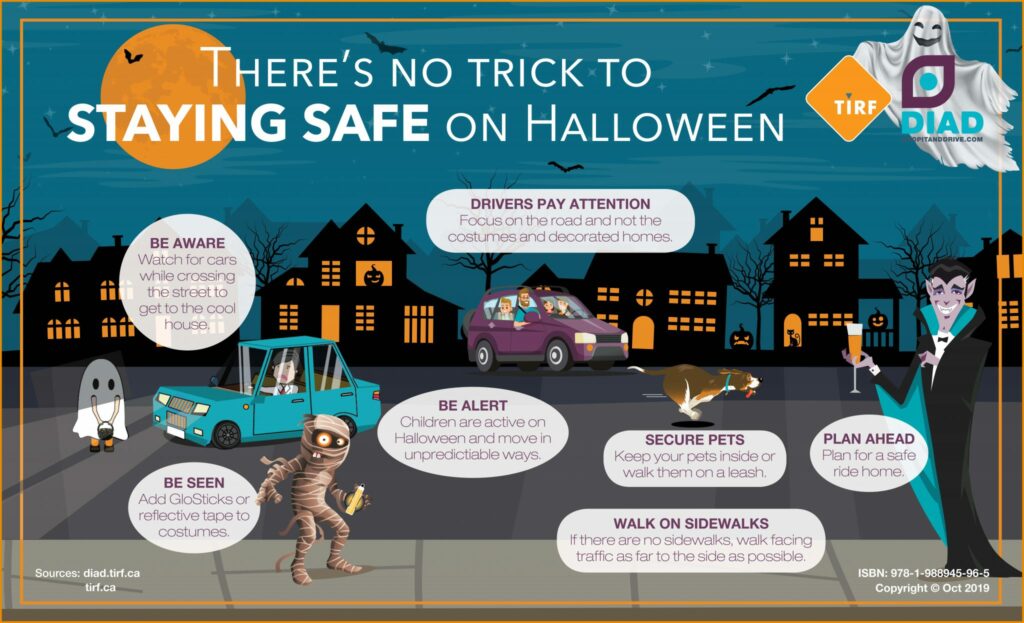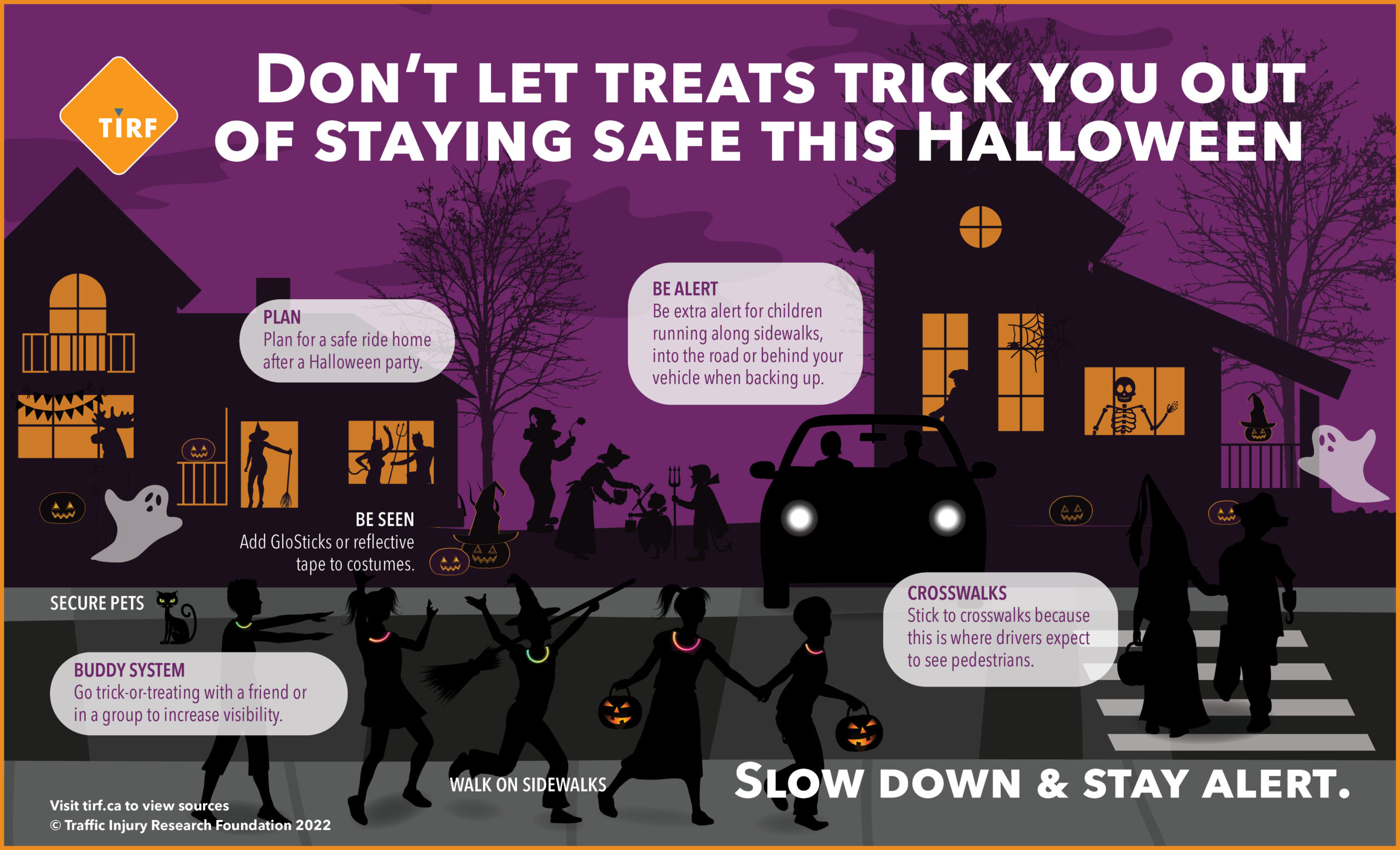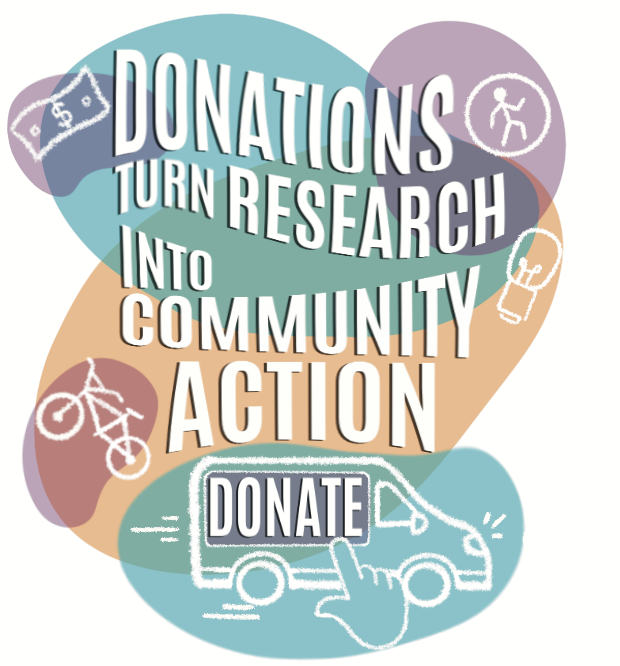On October 31st, kids run excitedly from house to house in search of tasty treats dressed up as whoever, whatever or wherever their imagination takes them. Given that younger pedestrians are at greater risk of injury or death because of their smaller size, and their auditory, visual and cognitive senses are less developed, it is important we all work together to keep the streets safe for everyone this Halloween.
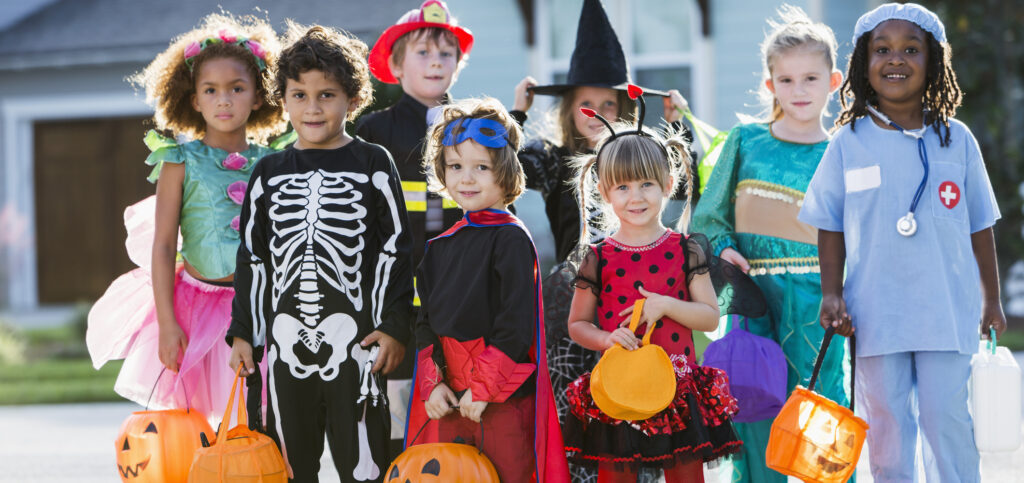
Why be extra cautious when driving on Halloween? Because there are more children on the roads at dusk and after dark…and they are excited! This means their internal safety radar may not be as strong as it usually is, as kids run from house to house in search of their favourite treat. Sadly, children are three times more likely to be fatally injured by a car on Halloween, and the risk of involvement in a fatal collision grows up to ten times for kids between the ages of 4 and 8.
According to the National Highway Traffic Safety Administration (NHTSA), October 31st has the most pedestrian fatalities among children. Based on ten years of data (2013-2023), 30 pedestrian fatalities for persons under 17 years of age occurred on this day, the highest out of every other day in the year. Of these 30 fatalities, 24 (80%) occurred between 4:00pm and 11:00pm, which we know is prime trick-or-treating time.
While pedestrian road fatalities are consistent throughout the year, some characteristics are particularly concerning at Halloween. This is the result of a variety of factors, including low visibility due to dusk, street-crossing safety being neglected, costumes limiting visibility, and an increase in impaired driving. According to Statistics Canada, the following factors were involved in fatal pedestrian crashes from 2018-2020:
- 1 in 5 pedestrian fatalities occurred at an intersection.
- 1 in 4 pedestrian fatalities occurred at night.
- 1 in 5 pedestrian fatalities involved an impaired driver.
- Challenging weather was reported in 8% of pedestrian fatalities.
- Low visibility (i.e., limited streetlights) was reported in 8% of pedestrian fatalities.
Tips for pedestrians:
- Use sidewalks & stay in well-lit areas.Stick to sidewalks and avoid walking on the road. If there are no sidewalks, walk facing traffic and as far to the left as possible. Choose well-lit streets and avoid poorly lit pathways or alleys.
- Cross at crosswalks & intersections. Always use marked crosswalks, pedestrian signals, or intersections to cross the street. Make eye contact with drivers before crossing to be sure they see you, and avoid darting out between parked cars.
- Use the buddy system. Travel with a friend, sibling, or group to increase safety and visibility. Groups are easier for drivers to notice, and having a buddy also helps children make safe decisions and stay on planned routes.
Ensure masks don’t block your vision. Some masks limit visibility, especially side vision. Test the mask before heading out and consider face paint or makeup instead if the mask restricts vision. Clear eyesight helps with spotting vehicles, curbs, and other people.
- Make yourself visible to drivers. Wear or add reflective accessories like wristbands, strips, or costumes with reflective elements. G low sticks, flashlights, and bright clothing also improve visibility.
- Create a safety plan in advance. Decide what to do if someone gets separated, choose a meeting spot and make sure children have a way to contact an adult, such as a cell phone. Review when to call 911 in an emergency and remind kids to never enter a stranger’s home to use a phone or get help.
Tips for drivers:
- Be alert on roads & take care on driveways. Many excited children are out at dusk & after dark. Be extra alert for them running along sidewalks, into the road and take extra caution when pulling in or out of driveways, scanning mirrors and blind spots thoroughly before moving.
Slow down. Reduce your speed below the posted limit in residential areas, school zones, and neighbourhoods where trick-or-treaters are likely to be. Drive with headlights on earlier than usual and eliminate distractions so you can react quickly to sudden movements.
- Buckle up. Even if you’re driving a short distance between stops, ensure everyone in the vehicle is properly buckled before moving. Children should use the appropriate car seat or booster based on their age and size. No distance is too short to drive unsecured.
- Car seats. Some Halloween costumes have padding or hard surfaces making it difficult for the car seat harness or vehicle seat belt to properly fit the child. Ensure the child is in a car seat safe costume or remove the costume prior to securing them into the seat.
- Pull over. When dropping off or picking up trick-or-treaters, stop at the curb in a well-lit area and away from moving traffic. Use hazard lights if needed, avoid blocking driveways or intersections, and make sure passengers exit on the sidewalk side rather than the road.
- Plan. Plan for a safe ride home after a Halloween party. Prevent driving impaired by having a sober friend/family member drive or take a taxi, ride share or public transportation.
Click on the TIRF Tips for a safe Halloween ads below to download, post & share:
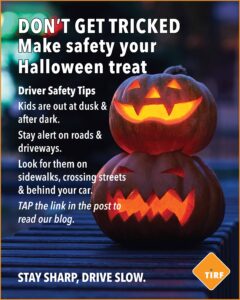 |
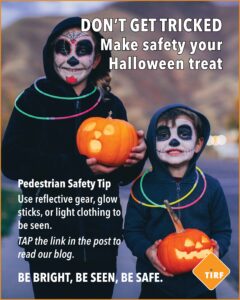 |
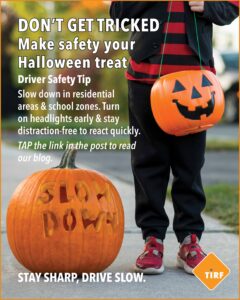 |
Click on our Halloween infographics below to download, post & share:
#MySafeRoadHome blog authors: Hannah Barrett, TIRF Researcher & Program Manager and Karen Bowman, Director, Communications & Programs (Drop It And Drive® program) work collaboratively as co-authors. Hannah is a criminologist and specializes in alcohol ignition interlock programs, wildlife-vehicle collisions, and impaired driving countermeasures. She is also mom to a kindergartener who loves to trick-or-treat and is looking forward to Halloween 2025. Karen has led the DIAD program since 2010 which, to date, has been delivered to over 65,000 youth and workers across North America. She uses her writing and blogging background to help apply TIRF’s research to real-world driving.
References:
Eduful, J. (2023). Pedestrian fatalities in Canada, 2018-2020. Statistics Canada (2023059).
Lyon, C., Delavary, M., & Weast, R. A. (2025). A comparison of recent crash fatality trends in Canada and the United States: Why do they differ?. Insurance Institute for Highway Safety.
National Highway Traffic Safety Administration. (2024). Pedestrian fatalities 2013-2023. https://www.nhtsa.gov/crash-data-systems/fatality-analysis-reporting-system
Staples, J. A., Yip, C., & Redelmeier, D. A. (2019). Pedestrian fatalities associated with Halloween in the United States. JAMA pediatrics, 173(1), 101-103.
Related topics:
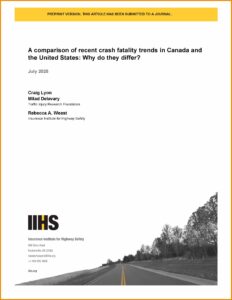 |
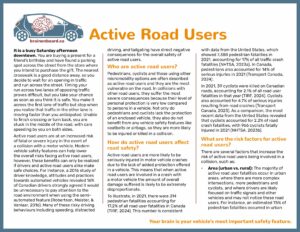 |
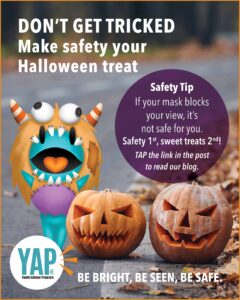 |
|

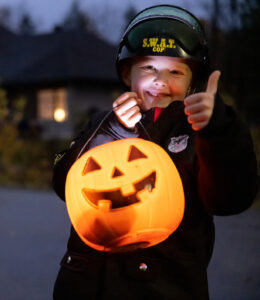 Ensure masks don’t block your vision. Some masks limit visibility, especially side vision. Test the mask before heading out and consider face paint or makeup instead if the mask restricts vision. Clear eyesight helps with spotting vehicles, curbs, and other people.
Ensure masks don’t block your vision. Some masks limit visibility, especially side vision. Test the mask before heading out and consider face paint or makeup instead if the mask restricts vision. Clear eyesight helps with spotting vehicles, curbs, and other people.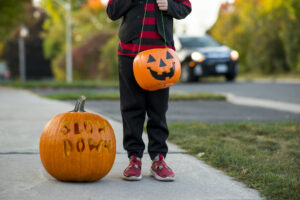 Slow down. Reduce your speed below the posted limit in residential areas, school zones, and neighbourhoods where trick-or-treaters are likely to be. Drive with headlights on earlier than usual and eliminate distractions so you can react quickly to sudden movements.
Slow down. Reduce your speed below the posted limit in residential areas, school zones, and neighbourhoods where trick-or-treaters are likely to be. Drive with headlights on earlier than usual and eliminate distractions so you can react quickly to sudden movements.